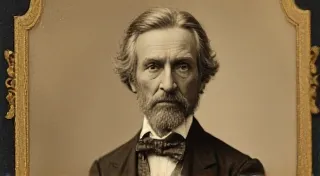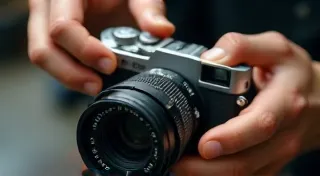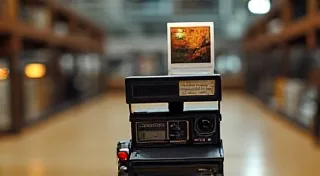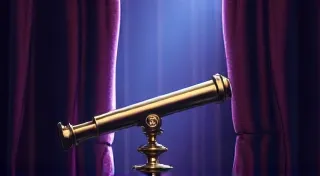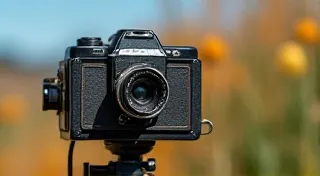The Ghosts in the Shutter: How Lost Memories Define Collectible Cameras
There’s a certain feeling you get holding an antique camera. It’s more than the cool weight of brass and leather, or the satisfying click of a well-crafted shutter. It's a whisper, a faint echo of lives lived, of moments captured and then, inevitably, lost to the relentless march of time. These aren't just objects; they’re vessels – repositories of forgotten memories, imbued with a unique and often indescribable emotional resonance that profoundly impacts their collectibility.
My grandfather, a quiet man of few words, left me his Kodak Brownie camera. It wasn't a particularly rare model, just a humble snapshotter from the 1930s. Yet, holding it now, I feel a connection to him that transcends the years. I imagine him, a young man on a family outing, painstakingly framing a shot of his wife and children, the grainy black and white image a precious record of a fleeting moment. That feeling – that tangible link to a personal history – is what elevates a camera from a mere artifact to something truly special.
The Dawn of Photography and the Birth of an Obsession
The history of photography is inextricably linked to the history of human desire – the desire to preserve, to remember, to share our experiences. Before digital sensors and instant sharing, the process was deliberate, often challenging, and profoundly personal. Early photography wasn’t a casual pastime; it was an investment, both financially and emotionally. The daguerreotype, the ambrotype, the tintype – each represented a complex and painstaking process, often requiring specialized equipment and considerable skill. These weren't disposable items; they were heirlooms in the making.
Consider the artistry of a daguerreotype. The photographer, often doubling as a chemist and darkroom technician, would painstakingly coat a silver-plated copper sheet with light-sensitive compounds. The resulting image, a direct positive reflection of reality, was incredibly fragile and required careful handling. The sheer effort involved speaks to the importance of capturing a likeness in an era where mortality rates were higher and photographic records were rare and treasured. Understanding the intricacies of early photographic processes is crucial for any serious collector – something we delve into further in our guide to antique camera care.
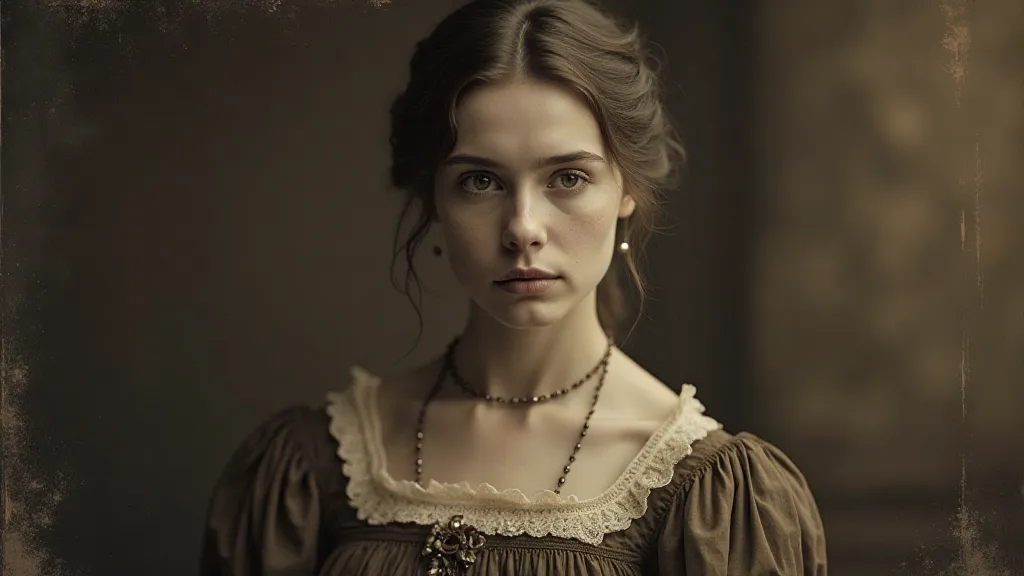
The Rise of Mass Photography and the Kodak Revolution
George Eastman’s introduction of the Kodak Brownie in 1900 democratized photography. Suddenly, capturing memories wasn’t the exclusive domain of the wealthy or the professionally trained. The slogan, "You Press the Button, We Do the Rest," perfectly encapsulates the revolutionary simplicity Eastman offered. While the process wasn't entirely hands-off (users sent their film rolls back to Kodak for development), it significantly lowered the barrier to entry. This period marked the beginning of photography as a widespread hobby and a key element of family life.
The rise of consumer photography also fueled a new aesthetic. Snapshots became common, documenting vacations, family gatherings, and everyday life. These images, often imperfectly framed and slightly overexposed, possess a raw honesty that's often lacking in more polished, professionally produced photographs. They are snapshots of a time, a window into the lives of those who came before us. The impact of this revolution extended beyond the Kodak Brownie, influencing countless camera designs and photographic practices – a subject often explored through profiles of famous photographers and their favorite antique cameras.
Beyond Mechanics: The Power of Provenance
When assessing the value of an antique camera, technical condition is, of course, a factor. Is the shutter working? Are the optics clear? Is the body free from major damage? But a camera's true value often extends far beyond its mechanical soundness. Provenance – the documented history of ownership – can dramatically influence its desirability. A camera that once belonged to a famous photographer, or one that was used to document a significant historical event, commands a premium simply because of its story.
Imagine holding a Leica that Ansel Adams used to capture iconic landscapes, or a Graflex Speed Graphic used by a war correspondent on the front lines. The knowledge that a legendary figure once held that same camera, that it witnessed events that shaped history, imbues it with an almost palpable energy. This intangible quality – the aura of a camera's past – is what truly captivates collectors. The impact of individual camera models and their impact on photography is a vast topic; the Rolleiflex, for instance, boasts a particularly rich legacy.
The Feeling of the Camera: An Intangible Quality
And then there’s the "feeling" of the camera. It's a subjective quality, difficult to articulate, but instantly recognizable. It's the way the camera feels in your hand, the quality of the materials, the precision of the construction. It's the subtle details that betray the craftsmanship of the era – the hand-stitched leatherette, the carefully engraved markings, the satisfying click of the shutter.
My grandfather's Brownie felt substantial, reliable. It wasn’t flashy, but it felt *right*. It connected me, somehow, to an era of quieter values and simpler pleasures. A digital camera, no matter how technically advanced, can’t replicate that feeling. The cold, sterile perfection of modern technology lacks the warmth and character of a hand-built antique.
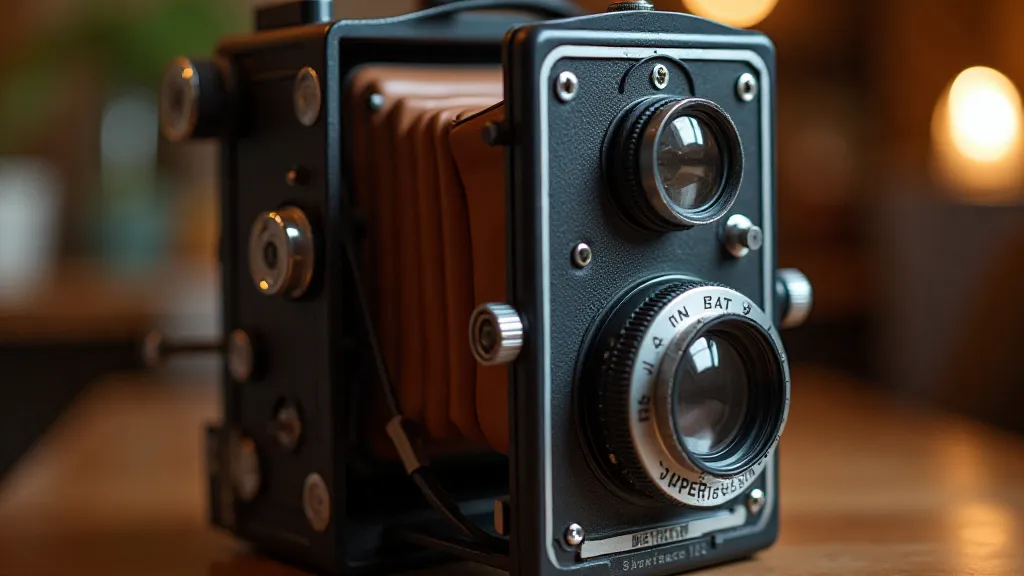
Restoration vs. Preservation: Honoring the Past
The debate between restoration and preservation is a constant one in the antique camera collecting world. While some collectors meticulously restore their cameras to pristine condition, others prefer to preserve them in their original, “as-found” state. Each approach has its merits. Restoration can return a camera to working order and make it more visually appealing, but it also risks erasing some of its history. A heavily restored camera can lose some of its authenticity, its tangible connection to the past.
For those contemplating restoration, understanding the intricacies of identifying and addressing various camera markings can be invaluable. The process isn’t just about cosmetic fixes; it's about respecting the original design and preserving as much of the camera's history as possible – something we explore in greater detail in our guide to identifying antique camera markings.
The Legacy Continues: Keeping Memories Alive
Antique cameras are more than just objects; they’s portals to the past, tangible reminders of the lives and experiences that shaped our world. They's testaments to human ingenuity, artistry, and the enduring desire to capture and preserve the moments that matter most. By collecting and caring for these cameras, we’re not just preserving pieces of equipment; we’re preserving memories, keeping stories alive, and honoring the legacy of those who came before us. The stories held within these cameras, and the craftmanship that produced them, represent a vital link to our past, inviting us to not just admire, but also understand the evolution of image-making. Consider the broader context of photographic history; the rise of twin-lens reflex cameras, for example, has profoundly shaped the art form - a story explored in detail through the history of the Rolleiflex.
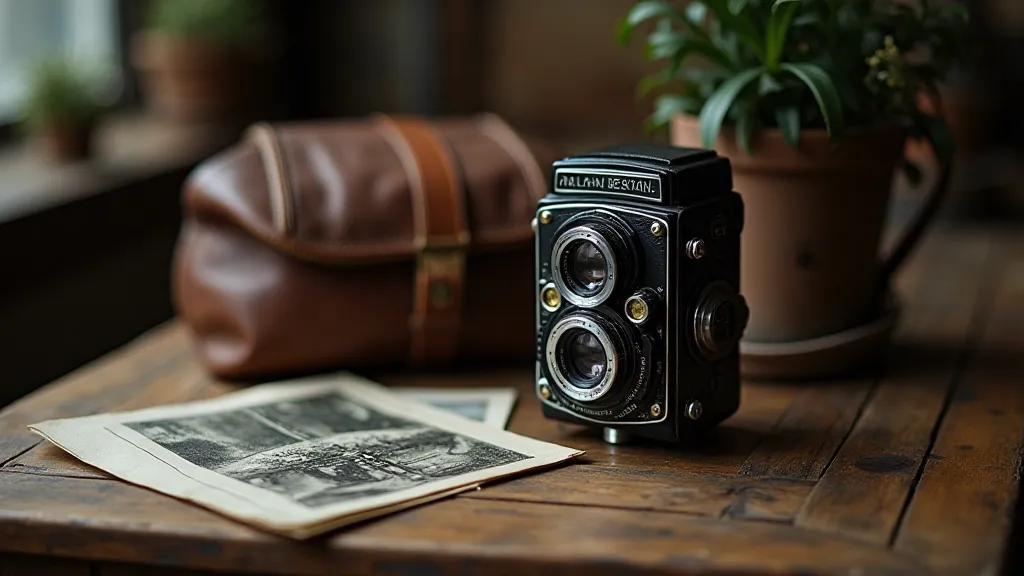
The dedication of early photographic artisans extended beyond simply creating functional equipment; it encompassed a deep respect for the medium and a desire to create objects of enduring beauty and value. This ethos is reflected in the meticulous attention to detail that characterized many antique cameras, from the hand-stitched leatherette to the precisely engineered shutters.
The rise of mass photography also coincided with significant social and cultural shifts. The ability to document family gatherings, vacations, and everyday life became an integral part of the modern experience, shaping our understanding of the past and our connection to each other. These snapshots, often imperfectly framed and slightly overexposed, offer a unique window into the lives of those who came before us, revealing the joys, sorrows, and everyday moments that defined their existence.
Furthermore, the development of new photographic processes and technologies has consistently pushed the boundaries of artistic expression. The advent of color photography, for instance, opened up new possibilities for capturing the vibrancy and complexity of the world around us, while the rise of digital photography has revolutionized the way we create and share images.
As we continue to embrace new technologies and explore new forms of artistic expression, it's important to remember the rich and complex history of photography. By collecting and preserving antique cameras, we're not just protecting pieces of equipment; we're safeguarding a vital part of our cultural heritage.
